- Home
- Chris Ryan
Stand By Stand By Page 7
Stand By Stand By Read online
Page 7
The Det was made up of guys drawn from all corners of the forces; within the SAS they were known as ‘Walts’. Some had come from the Regiment, but others were from all sections of the British services, and as far as work went, the whole lot kept themselves very much to themselves. In Belfast our guys shared a canteen and bar with them, and we were told that they were friendly enough off-duty; at LATA, whenever I saw some of them, I noticed how totally unremarkable they looked. I’m sure they’d been picked partly for their anonymous appearance, and for the fact that they had no distinguishing features. They were neither too tall nor too short, neither too fat nor spectacularly thin. None of them was particularly good-looking, but no one was all that ugly either. They all seemed to be uniform and neutral, so that they would blend effortlessly into a crowd anywhere in Northern Europe, and if you saw a couple of them in a car you wouldn’t look twice. But we soon realized that they were highly trained, and an indispensable weapon in the fight against terrorism.
Until we tried it, I don’t think any of us had realized what an elaborate business surveillance was – a team of eight or ten men or women tracking a single target, all in immediate touch with each other by covert radio, all speaking a special language. The radios were secure, and scrambling devices made it impossible for outsiders to listen in. The jargon wasn’t designed to baffle anyone; rather, its aim was to achieve economy and precision – to cut down time on the air and eliminate misunderstandings. Thus ‘Bravo’ was any man, ‘Echo’ any woman, ‘Charlie’ any car. ‘Foxtrot’ meant on the move on foot, ‘Mobile’ in a car. ‘Complete’ signified that a person had gone into a house or a car. ‘Getting a trigger’ meant getting your eyes on the target or the place where he was last seen.
To give us an idea, the instructor set up a scenario on the magic board – the big sheet of white-enamelled metal that covered most of the front wall of the classroom. Switching on a projector, he put a blown-up street-plan on the board and placed a few magnetic counters on it. One was black – the target – and the others white. Also on the plan were some coloured spots – red, green and blue, with numbers on them. Each of these, he explained, was used to identify a particular area. It was far easier and quicker to say ‘Green One’ than ‘The crossroads at the intersection of River Street and Upper Richmond Way,’ or give the place’s grid-reference.
‘Now,’ he began, ‘the most important guy in any surveillance operation is the one running it from the ops room. He’s sat there with all his radios on, a couple of helpers, and a blown-up map of the area you’re in. One big plus about this part of your training is that it gets you shit-hot on the radio. You’ve got to be really slick in reporting the target’s movements. If you’re slow, you’re too late – he’s gone round a corner and you’ve lost him.
‘Now, what happens if the target goes to ground in a house? Well, it’s up to the controller to bring people in to box the site.’ He moved four white counters on to street junctions around the black blob. ‘There you are. You sit on corners, in cafes or bars, waiting for the target to reappear. If you do your job properly, he can’t get out of the box without one of you seeing him.
‘If you think he’s seen you, the golden rule is: peel off. Tell everyone else and get lost. Things go tits-up when somebody thinks he’s OK and carries on. If you do that, all you manage to do is confirm to the target that surveillance is on him, and he may go to ground for weeks. OK, then, listen to this.’
He switched on an audio-tape – a hissing, crackly recording of a live operation. Every time a new voice came in he moved the corresponding white counter, and after every report he shifted the black target to a new position, all the time throwing in explanations of his own.
‘I’ve got the trigger on Bravo One’s house,’ said the first voice. ‘At the moment he’s complete.’
‘In other words, he’s indoors,’ said the instructor.
Then, a moment later, the voice said, ‘Stand by, stand by. The door’s open. Oh no. Nothing. It’s his wife going to the bins.’ Another pause. Then, ‘Stand by, stand by. That’s Bravo One leaving. He’s foxtrot northwards.’
‘He’s walking up this street here,’ the instructor explained, sliding the black counter upwards.
The voice came in again. ‘He’s wearing black on blue. Heading for the Drover’s Arms on the corner. Now he’s turning right . . .’
Another voice, a Scottish accent: ‘Yeah, I’ve got him. I can take him down Commercial Street. He’s foxtrot eastwards. Now he’s joined up with Bravo Two. They’ve both gone complete in Charlie One, a bronze Escort. Can’t get the number.’
‘Both targets are in the car,’ said the instructor, placing a yellow disc on the board.
A few seconds passed, and the Scots voice returned: ‘Charlie One mobile eastwards towards Green Three.’
Then came another voice, measured, authoritative, the controller: ‘Steve, are you covering Green Three?’
‘On Green Three, facing north.’
‘Prepare to take over Charlie One . . .’
As I listened, I felt the hairs on my neck rise up. The process was fascinating in itself, but in my mind’s eye I was part of a team in West Belfast, tracking two players through the seedy Nationalist areas – maybe the Falls Road or Andersontown. The guys in the car were leading us towards Gary Player and a major contact. Any moment I might set eyes on my No. 1 enemy.
The soundtrack fell silent. ‘If you’re driving,’ the instructor said, ‘the one place you don’t want to be is in the car behind the target. Keep two or three cars back. If people are doing something they didn’t ought to be doing, they’re forever looking behind them in their mirrors. If you do find yourself behind, for Christ’s sake peel off at the first opportunity and get someone else to take over.’
‘Stop, stop, stop!’ called a new voice from the tape. ‘Charlie One has pulled up in a lay-by at 489346. Bravo Two is foxtrot towards a telephone kiosk . . .’
The lads were getting excited by the idea of going across the water, and enthusiasm rose still higher whenever guys came back with stories of live operations. Several concerned the ace sniper who was doing shoots in the border area and in Belfast, taking soldiers out with a .50 rifle – a fearsome weapon which could put a round straight through a man’s chest, flak jacket and all, at five or six hundred metres. The sniper was highly skilled and well organized. From the way he operated, the Det concluded that he had been trained in America. He had a lot of dickers – lookouts – who would check that an area was clear before he ventured forth. Then, if all was well, he’d come out and do a shoot on an army patrol. The only man known to have survived an attack from him was a soldier who’d been on patrol in West Belfast. The incoming round hit his SA 80, which he was holding across his chest. The weapon disintegrated, and parts of it (or of the .50 bullet) flew upwards, ripping chunks out of his face; but at least he wasn’t killed.
The Regiment had set out to get the sniper by staging a come-on, posing as a green army patrol. The idea was to egg him on and keep him on the air so that the radio specialists could DF him and find out where he was based. It was dicey as hell, but it nearly worked. A few of the Regiment guys dressed up as ordinary soldiers and went through the motions of mounting a patrol. As they came into the target area, through their earpieces they could hear a dicker commentating on their progress.
‘OK,’ said this Ulster voice, ‘there’s a patrol coming down the road. They’ll be in your field of view in about thirty seconds.’
The sniper did not answer. There was a pause, then a sudden change of emphasis. ‘Jaysus!’ said the Ulster voice. ‘There’s something wrong here. They’ve got the wrong fecking weapons. They’ve got G3s, not SA 80s. The fellers are older, as well. They don’t look like squaddies at all.’
The sniper realized immediately that the patrol was an SAS one. All he said was, ‘I’m pulling off.’ With that he fell silent, and the attempt at DF-ing him failed.
That wasn’t the end of it, though. The Reg
iment tried again; this time they went to the lengths of taking a black fellow over, to make the patrol look still more realistic. They carried SA 80s, so that everything seemed pukka. It was quite an elaborate operation, with some guys airborne in a chopper and others deployed on the ground around the periphery, to block the sniper in if they got a line on where he was set up.
Again the patrol was listening out as the dickers commentated on their approach, but this time, to their consternation, they heard the shooter say, ‘Right, I’m ready to fire. I’ll take the second fecker from the front.’ At that they did a bomb-burst, and every man hit the deck in a different direction. Then they upped and ran like stags, all over the place. They didn’t collect back at the emergency rendezvous for more than an hour, and by then the gunman had once again melted into the night.
Of all our training, it was the range practices that I enjoyed most. Partly it was because I had become quite good with a pistol; but beyond that, in putting down live rounds I felt I was getting closer to my objective than on any of the rest of our activities, realistic though they were.
For pistol training we’d head out to the range at 0900. A couple of the guys were detailed to collect ammunition from the stores and lug the heavy metal boxes to the range hut. One man would go round putting up the red flags, to show that live firing was in progress, and the rest of us would sort out the targets.
The range had high stop-banks of soil thrown up in a horseshoe shape, so that you could fire at targets round three sides of it. Old railway sleepers were set into the ground, with holes drilled into them so that targets could easily be set up. We’d start by firing off two or three magazines just to get comfortable. Everyone had used pistols earlier in their training, so they all knew which their master eye was and how to take up a proper, easy stance: semi-crouching, with – for a righthander – the left hand cupped round the outside of the right, supporting it.
If rounds started going low, you knew you were snatching at the trigger – and the instructors had a special drill for correcting that fault. One of them would say, ‘Hey, try doing the old ball and dummy with me.’ Then he’d stand behind the shooter and load his pistol for him, sometimes putting live rounds in the magazine, sometimes leaving it empty, so that the man pulling the trigger didn’t know if it was going to go off or not. That way, if he was flinching and snatching, the instructor could see the end of the barrel dip, and try to rectify the fault.
After the guys had sorted themselves out and got their eyes in, everyone would have a brew from the urn by the target shed. Then the instructor would move on to drawing from holsters. He’d line up the lads in front of the targets and call, ‘UP!’ Everyone would draw, fire a quick double-tap, then re-holster the pistol. Then we’d turn through ninety degrees to the right or left, and at the second command we’d draw, swivel and fire. Next we’d turn the other way, shoot from that position, and finally face backwards, so that we had to spin through 180 degrees.
Then we’d do some walking practice – maybe four of us at a time. The aim was to get everybody nice and confident, walking with their hands at their sides, in a relaxed attitude. Then at the command ‘UP!’ we’d stop, draw, whip round and fire, all in a split second. If the targets were numbered, and we were walking in pairs, the instructor might yell ‘ONE AND FOUR!’ whereupon we’d have to engage those two targets. When each practice finished, the instructor would say, ‘OK, guys, paste up,’ and we’d go forward to stick coloured patches over the bullet holes.
At some stage, as we were firing, he’d yell ‘Stoppage!’ and we’d go down on one knee, hitting the release button of the magazine as we went; we’d whip the magazine out, slot another in, and be firing again as we came back up. In a contact, our lives might depend on the speed with which we reacted, and I practised until I could do the change in less than three seconds.
Speed and accuracy were everything. With the Hun’s Head targets – the silhouette of a German soldier’s head and trunk – it was always the head we aimed at, and up to twenty paces I reckoned I could put a double-tap straight through the middle of the forehead ten times out of ten. With the bigger Figure 11 targets we stuck on small white patches to give us precise aiming marks.
I found it odd that the lads who weren’t actually firing would show little interest in what was going on. They’d sit on the bench outside the hut, chit-chatting away – the young ones would be on about the old trout they’d been humping the night before, the older guys about the extensions they were putting on their houses. As for me, I couldn’t get enough of it. I had grown fanatically determined that if ever my chance came across the water, I wasn’t going to flunk it. I’m sure some of the guys thought I was becoming obsessive, and I suppose I was – but only for a reason about which I couldn’t enlighten them.
All our training emphasized the need for restraint and split-second timing. Many times in the past (we heard), our predecessors had had to wait until players were actually levelling weapons in front of them before they themselves could fire; if they’d shot sooner, before they were under immediate threat, they could have ended up in court charged with murder. It seemed ridiculous that the dice should be so heavily loaded in the terrorists’ favour – yet that was the way things stood.
I recalled part of old Morrison’s tirade, in which he had lambasted the excessive restraints under which the security forces had to work: ‘When we’ve brought a murderer into the station,’ he’d said, ‘if I so much as cuff him on the ear, that’ll guarantee to put me in court. If I kick the chair from under him, that’s an assault. Even if I lean over the table to emphasize a point, that’s threatening him, and the interview’s stopped because it’s being monitored by the chief inspector sitting in the back.’
In some irrational way, I felt that the normal restrictions did not apply to me. Gary Player had already committed murder, and that was sufficient justification for my taking him out, never mind any further crimes he might commit. At the back of my mind I realized that in planning a personal vendetta I was stepping out of line. The essence of any SAS operation is teamwork, and here I was, trying to crack something on my own.
Working solo, without mates to cover my movements, would expose me to a far greater risk of getting shot or captured. Normally, working in pairs, you cover each other, and you can shoot your way out of trouble. Alone, without a partner, I could easily end up in the shit. I never really faced up to the thought of what might happen if I was captured. Very few of the guys ever did. Deep down, they knew perfectly well that if the IRA got them, they would be whipped south of the border and would probably never see the light of day again. They would die – but not before they had suffered unspeakable tortures. For this reason, some of them privately admitted that if things looked really bad they’d shoot themselves; but most preferred to believe they would come out fighting. I was one of that majority.
Apart from survival, there was also the little matter of identifying my victim. How in hell was I to find out who he was? And even if I did discover his name, how was I to track him down? Such was the force of my anger that I had no doubt I would find him somehow.
One morning a couple of weeks before the end of the course, I was due to have my arm checked by a specialist in the tri-service hospital at Wroughton. By then I was so hyped up that the thought of losing half a day’s training quite pissed me off – but I scented possible compensation in the fact that Tracy might be on duty when I clocked in at the camp Med Centre to pick up my X-rays.
She was. When I appeared, she was on the phone, but before I’d taken two steps into the room she banged down the receiver with a loud cry of ‘SHIT!’
‘Something the matter?’
‘It’s our effing landlord. He’s throwing us out.’
‘That’s tough. What happened?’
She told me she’d been living with a friend, Susan, in a flat on the outskirts of town. They had no proper security of tenure, and now the owner of the house was going abroad and wanted to let the who
le place as a single unit. He had given the girls a fortnight to pack their bags.
Listening to Tracy talk, watching her, I thought she had changed. Her face was lit up with indignation, but she seemed more mature, less wild and tarty than I remembered her. Maybe I was influenced by the fact that she’d been very sweet about Kath the first time I’d seen her after the disaster. In any case, I now felt sorry for her.
Even so, it wasn’t until I was in the minibus, half-way to Wroughton, that the idea hit me. For some time I’d been worrying what would happen to Keeper’s Cottage when I went to Belfast. Tony was about to go off on the jungle phase of his selection course; in any case, he wouldn’t want to live out in the country on his own while I was away. I could simply lock the door and go, but I didn’t want the place to stand empty for months on end.
So why not offer the house to Tracy and Susan? I didn’t know whether or not Susan had a car, but Tracy certainly had one, and could easily commute in and out. As long as being out in the wilds didn’t spook them, they could live in the cottage rent-free, look after things till I got back, and give themselves time to find permanent accommodation elsewhere.
At Wroughton there was the usual delay. A backlog of patients had built up, and I was told I’d have to wait half an hour; so I went down the corridor to the payphone and called the Med Centre’s reception.

 Global Strike
Global Strike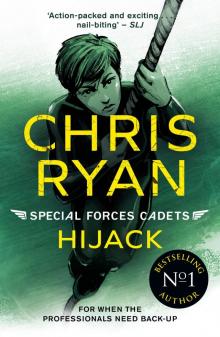 Hijack
Hijack Special Forces Cadets 2
Special Forces Cadets 2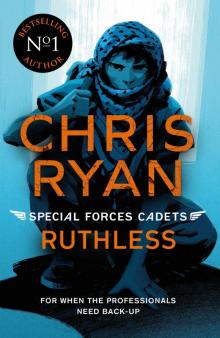 Ruthless
Ruthless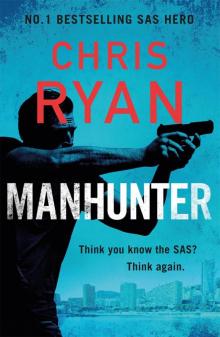 Manhunter
Manhunter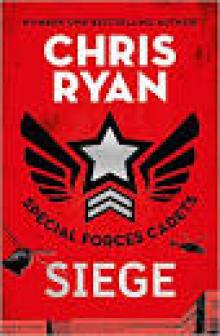 Special Forces Cadets 1
Special Forces Cadets 1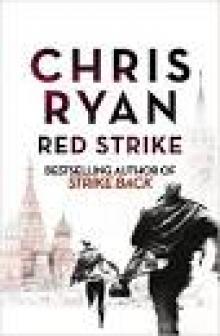 Red Strike
Red Strike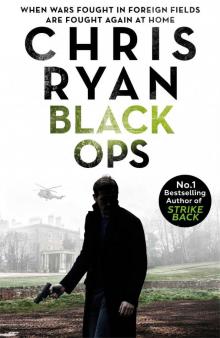 Black Ops
Black Ops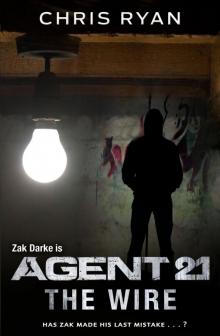 Agent 21: The Wire
Agent 21: The Wire Land of Fire
Land of Fire Alpha Force: Fault Line
Alpha Force: Fault Line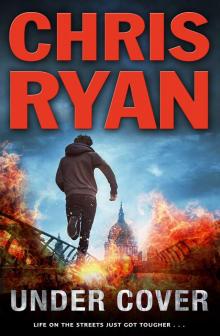 Under Cover (Agent 21)
Under Cover (Agent 21)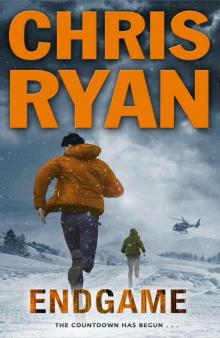 Endgame (Agent 21)
Endgame (Agent 21) Red Centre
Red Centre Blackout
Blackout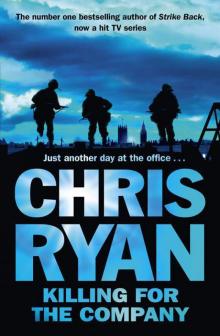 Killing for the Company
Killing for the Company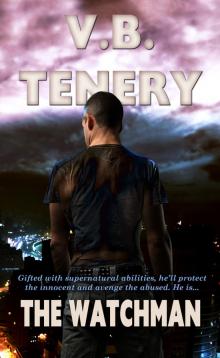 The Watchman
The Watchman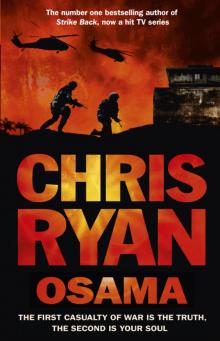 Osama
Osama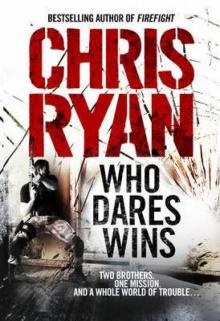 Who Dares Wins
Who Dares Wins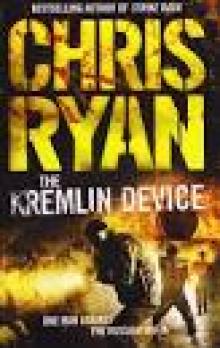 The Kremlin Device
The Kremlin Device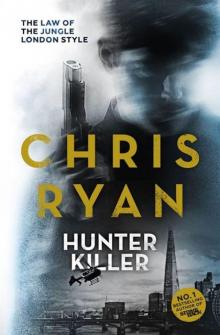 Hunter Killer
Hunter Killer Alpha Force: Untouchable
Alpha Force: Untouchable Stand By Stand By
Stand By Stand By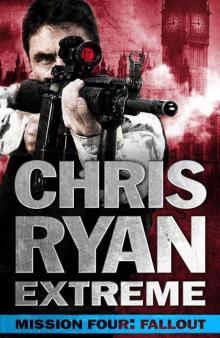 Chris Ryan Extreme: Hard Target: Mission Four: Fallout
Chris Ryan Extreme: Hard Target: Mission Four: Fallout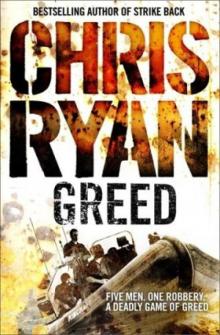 Greed mb-1
Greed mb-1 Alpha Force: Desert Pursuit
Alpha Force: Desert Pursuit Strike Back
Strike Back Greed
Greed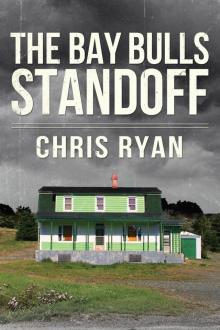 The Bay Bulls Standoff
The Bay Bulls Standoff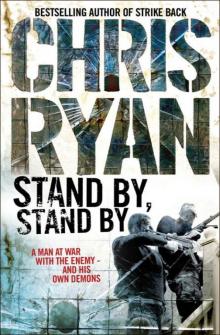 Stand By, Stand By gs-1
Stand By, Stand By gs-1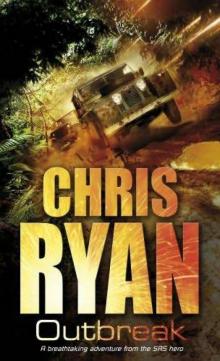 Outbreak
Outbreak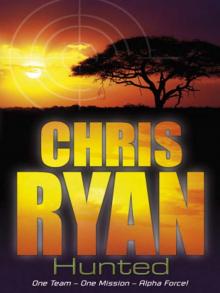 Hunted
Hunted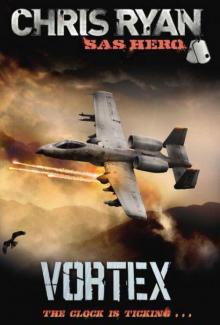 Vortex cr-4
Vortex cr-4 Rat-Catcher
Rat-Catcher Vortex
Vortex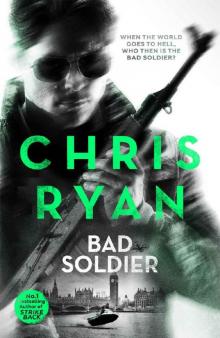 Bad Soldier
Bad Soldier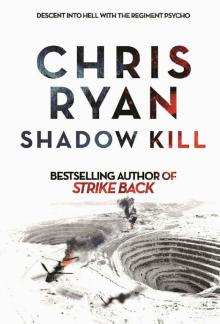 Shadow Kill: A Strikeback Novel
Shadow Kill: A Strikeback Novel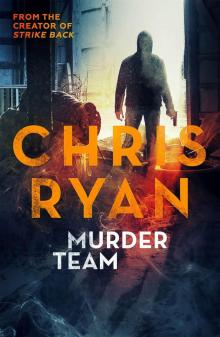 Murder Team (Kindle Single)
Murder Team (Kindle Single)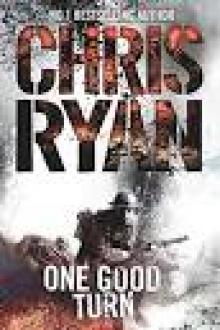 One Good Turn
One Good Turn Flash Flood cr-1
Flash Flood cr-1 Night Strike
Night Strike Wildfire
Wildfire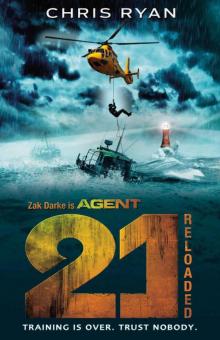 Agent 21: Reloaded: Book 2
Agent 21: Reloaded: Book 2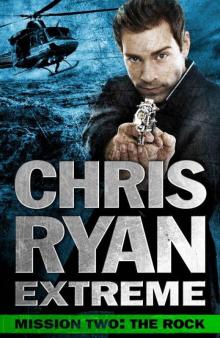 Chris Ryan Extreme: Hard Target: Mission Two: The Rock
Chris Ryan Extreme: Hard Target: Mission Two: The Rock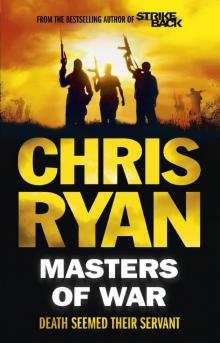 Masters of War
Masters of War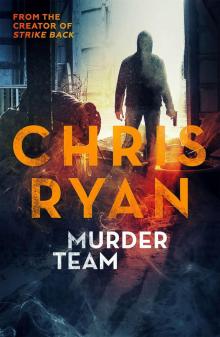 Murder Team
Murder Team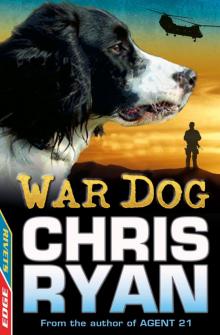 War Dog
War Dog Wildfire cr-2
Wildfire cr-2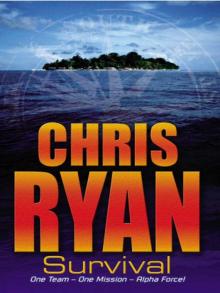 Survival
Survival The One That Got Away - Junior edition
The One That Got Away - Junior edition The Hit List
The Hit List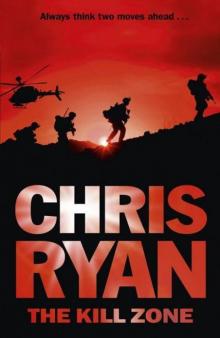 The Kill Zone
The Kill Zone Medal of Honor
Medal of Honor Battleground
Battleground Twister
Twister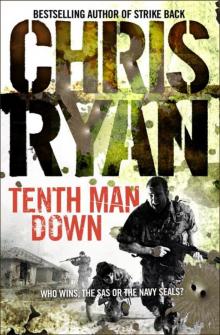 Tenth Man Down gs-4
Tenth Man Down gs-4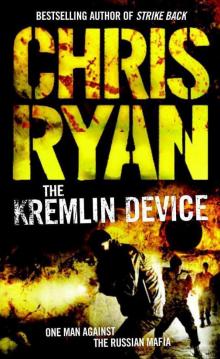 The Kremlin Device gs-3
The Kremlin Device gs-3 Hostage
Hostage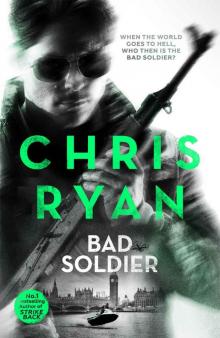 Bad Soldier: Danny Black Thriller 4
Bad Soldier: Danny Black Thriller 4 Alpha Force: Blood Money
Alpha Force: Blood Money Firefight
Firefight Chris Ryan Extreme: Hard Target: Mission One: Redeemer
Chris Ryan Extreme: Hard Target: Mission One: Redeemer Hit List
Hit List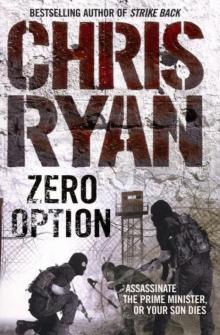 Zero Option gs-2
Zero Option gs-2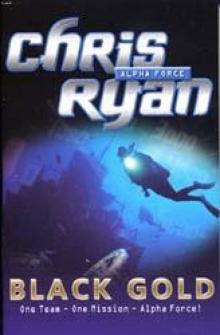 Black Gold
Black Gold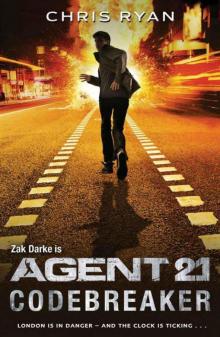 Agent 21: Codebreaker: Book 3
Agent 21: Codebreaker: Book 3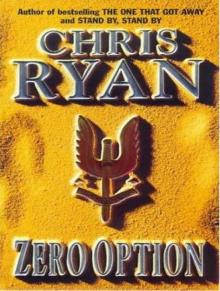 Zero Option
Zero Option Ultimate Weapon
Ultimate Weapon Tenth Man Down
Tenth Man Down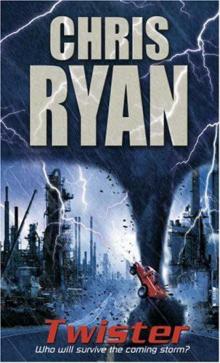 Twister cr-5
Twister cr-5 Deathlist
Deathlist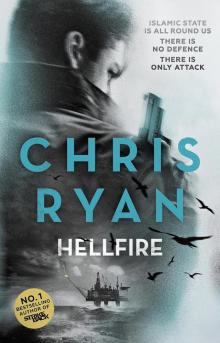 Hellfire
Hellfire Flash Flood
Flash Flood Battleground cr-6
Battleground cr-6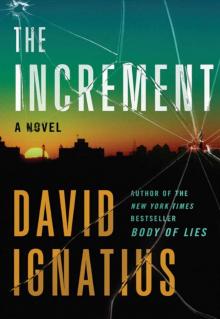 The Increment
The Increment